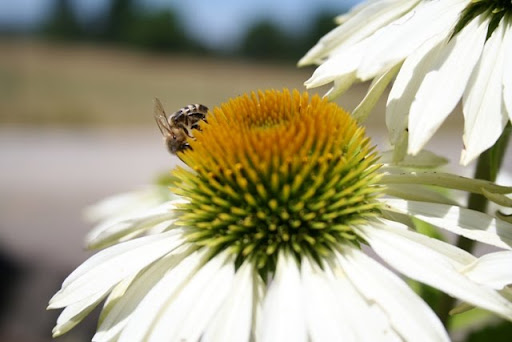Sunday, November 27, 2011
Saturday, October 1, 2011
Saturday, April 30, 2011
Beloved bearded iris
Thursday, February 17, 2011
Drainage success. And healthy results.
We installed a french drain on an Orinda residential landscape in Oct-09. The clients had previously experienced up to 12" of standing water in the lowest part of the landscape during rain storms.
 We are experiencing a winter storm that dropped 1.18" of rain in the past 12 hours. I visited the site to check on the effectiveness of the drains; there was no standing water and I walked across the landscape with a solid base of soil under my boot - no mud. Stunning contrast to that of 18 months ago.
We are experiencing a winter storm that dropped 1.18" of rain in the past 12 hours. I visited the site to check on the effectiveness of the drains; there was no standing water and I walked across the landscape with a solid base of soil under my boot - no mud. Stunning contrast to that of 18 months ago.


 We are experiencing a winter storm that dropped 1.18" of rain in the past 12 hours. I visited the site to check on the effectiveness of the drains; there was no standing water and I walked across the landscape with a solid base of soil under my boot - no mud. Stunning contrast to that of 18 months ago.
We are experiencing a winter storm that dropped 1.18" of rain in the past 12 hours. I visited the site to check on the effectiveness of the drains; there was no standing water and I walked across the landscape with a solid base of soil under my boot - no mud. Stunning contrast to that of 18 months ago.
The successful strategy? French drains that direct water to the back of the property where is slowly percolates into a hillside. However, the most important strategy deployed at this site was healing of the soil porosity! Four cubic yards of CCL Organics Soil Builder compost + 200+ lbs of organic soil amendments applied to main planting beds and 50 lbs greensand (residues of ancient oceans) and wood chips (not bark) = SUCCESS. And happy clients (the best part).
Photo of the water flow not far away from this site - an example of how much water has percolated into the soil (supporting the abundance of life around it):

Keep loving the soil.
Jae
Wednesday, February 9, 2011
I love the soil.
Structural crust is formed from water drop impact. If there is sufficient organic matter on the soil surface, the impact of rain will be lessened and soil structure, microbiology and porosity will be maintained.
It takes time for disrupted soils to become fully active in diverse microbial populations. Organic matter on the soil surface will encourage microbiological activity. Dropped leaves, for example, are ideal mulch over the compost-and-nutrient-mixture we have applied already. On immature or unprotected soils, the rain drops break apart the soil aggregates. These aggregates are formed by the exudates produced by the individual soil biology organisms that then act to adhere particles of soil to one another; when these aggregates have little organic matter in the surrounding or surface soil (e.g., no protection) a structural crust results.
The porosity of soil is, thereby, reliant upon a high level of organic matter and healthy microbiology – the makings of soil aggregates which are THE prevention of erosion.
It is important to leave the soils undisturbed as much as possible (e.g., no raking). The soil biology resides primarily in the top 5 cm of soil; any disturbance, such as raking, disrupts the expansion of a healthy soil foodweb.
A helpful reference sampling soil structure and tillage impact:
http://www.environment.nsw.gov.au/resources/soils/soilstructure.pdf
Our region can be classified as “semi-arid”.
http://www.paton.com.au/Research/Horticulture/Pedocare/TheSealingProcessandCrustFormation.pdf
Anyway. Enjoy. Love that soil. Abundance will result. Well, I suppose Abundance always is the result of Love.
It takes time for disrupted soils to become fully active in diverse microbial populations. Organic matter on the soil surface will encourage microbiological activity. Dropped leaves, for example, are ideal mulch over the compost-and-nutrient-mixture we have applied already. On immature or unprotected soils, the rain drops break apart the soil aggregates. These aggregates are formed by the exudates produced by the individual soil biology organisms that then act to adhere particles of soil to one another; when these aggregates have little organic matter in the surrounding or surface soil (e.g., no protection) a structural crust results.
The porosity of soil is, thereby, reliant upon a high level of organic matter and healthy microbiology – the makings of soil aggregates which are THE prevention of erosion.
It is important to leave the soils undisturbed as much as possible (e.g., no raking). The soil biology resides primarily in the top 5 cm of soil; any disturbance, such as raking, disrupts the expansion of a healthy soil foodweb.
A helpful reference sampling soil structure and tillage impact:
http://www.environment.nsw.gov.au/resources/soils/soilstructure.pdf
Our region can be classified as “semi-arid”.
http://www.paton.com.au/Research/Horticulture/Pedocare/TheSealingProcessandCrustFormation.pdf
Anyway. Enjoy. Love that soil. Abundance will result. Well, I suppose Abundance always is the result of Love.
Monday, January 10, 2011
Wisdom shared by mentor David Richo
"I am fully present here and now with all my unconditional attention, acceptance, appreciation, affection and allowing. I am happy to let go of judgement, fear, control and demands. May this be the way I show love to everyone. May I be ever more open to the love that comes to me. May I feel compassion for those who are afraid of love. May all beings find this path of love."
Subscribe to:
Posts (Atom)

